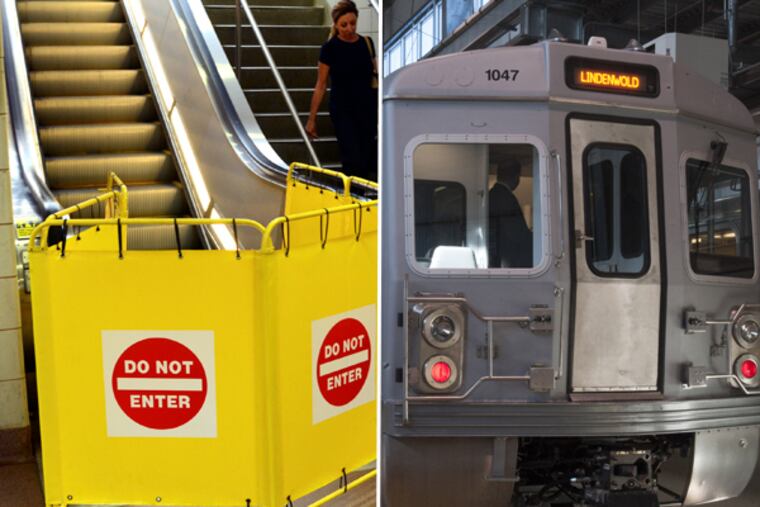Like its train cars, PATCO needs a face-lift
With new lights, colors, and digital displays, No. 1047 looks terrific on the inside. Outside, its silvery skin also gleams.

With new lights, colors, and digital displays, No. 1047 looks terrific on the inside. Outside, its silvery skin also gleams.
The 45-year-old PATCO car has undergone more than a cosmetic makeover; a recent $1.6 million overhaul includes new or rebuilt electronic, mechanical, and other systems.
But even though the undercarriage - wheels, gearbox, and other components - have been rehabilitated, they're the originals from 1968, when the car was built by the Budd Co. in Philadelphia.
And even refurbishing the entire 120-car fleet (that's the $195 million project) may not be enough to restore the confidence of riders like Lynn Lukaszewski of Cherry Hill.
"Things have gone from bad to worse" on PATCO, says Lukaszewski, 59, who uses the 14.2-mile rail line to get to her job as a legal secretary in Center City.
Lukaszewski and other commuters say an increase in delays, a decrease in cleanliness, and the debacle of dysfunctional/defunct escalators in stations up and down the line have taken a toll.
The fact that escalators - admittedly complicated machines, but surely not as complicated as, say, trains - became a crisis after PATCO somehow neglected to renew a maintenance contract hardly enhances the railroad's public image.
Even occasional riders like me can't help but notice that this onetime model of mass-transit service is sometimes mediocre, and sometimes worse. Just ask anyone who has sat in a stalled train in a tunnel, or, worse, on the Ben Franklin Bridge.
"We used to laugh about [the disruptions], but we don't anymore," Lukaszewski says.
In an e-mail and later interview, she says frequent breakdowns create packed cars and hot tempers. Riding the "Speedline" has become an adventure, and not in a good way. "I used to love it," Lukaszewski says.
Officials of the Delaware River Port Authority, which oversees the rail line, say they feel the pain, and will win back the love.
They cite station renovations, the introduction of the Freedom card system, and the fleet overhaul project as signs of the line's bright future.
But first: the $100 million replacement of the two single tracks that carry the line across the Delaware River on the Ben Franklin. Work begins in April and is expected to take two years.
"It's a matter of safety and functionality that you have to replace ties and tracks every 25 to 30 years," PATCO president John Matheussen, the authority's CEO, says.
"There's no doubt there's going to be some inconvenience, and some people are going to have frustration as a result. But we're going to expedite the work and communicate to our customers as best we can."
The recent redecking of the Walt Whitman Bridge suggests the authority is capable of executing a complex engineering and construction project on time and on budget.
But the escalator disaster ("our Achilles heel," Matheussen says) is more alarming than some mere mechanical breakdown.
It seems to many (me included) that, until 2010, at least some DRPA core tasks took a backseat to the bestowing of "economic development" grants.
Matheussen insists the escalator mess is unrelated to any grant-making, and also says the authority is focused on the bridges and PATCO.
So I'll take him at his word and respectfully ask that he and his authority fix the escalators, lay down that new track, and roll out those nifty new cars.
Show us that the DRPA really does know how to run a railroad.
>Inquirer.com
To view video
of an overhauled
PATCO car, go to
EndText